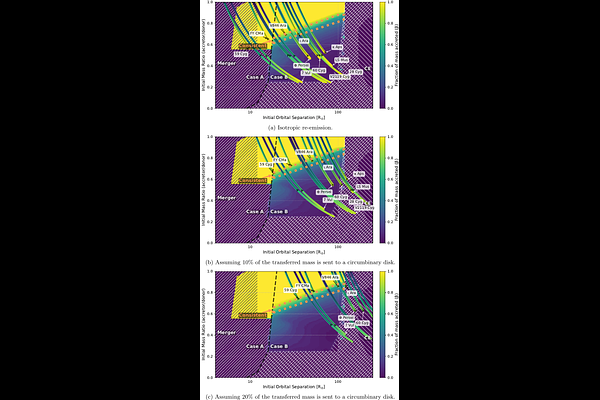Binary stars take what they get: Evidence for Efficient Mass Transfer from Stripped Stars with Rapidly Rotating Companions

Binary stars take what they get: Evidence for Efficient Mass Transfer from Stripped Stars with Rapidly Rotating Companions
Thibault Lechien, Selma E. de Mink, Ruggero Valli, Amanda C. Rubio, Lieke A. C. van Son, Robert Klement, Harim Jin, Onno Pols
AbstractBinary stars and their interactions shape the formation of compact binaries, supernovae, and gravitational wave sources. The efficiency of mass transfer - the fraction of mass retained by the accretor during binary interaction - is a critical parameter that significantly impacts the final fate of these systems. However, this parameter is observationally poorly constrained due to a scarcity of well-characterized post-mass-transfer binaries. Be+sdOB binaries, consisting of a rapidly rotating Be star and a stripped hot subdwarf companion, are particularly valuable for studying mass transfer since they represent clear examples of past binary interaction. Recently, a significantly expanded observational sample of 16 Be+sdOB binaries with well-constrained masses was obtained through combined spectroscopic and interferometric observations. In this work, we compile and analyze this sample to provide robust constraints on the mass transfer efficiency in binaries that underwent stable mass transfer during the donor's hydrogen-shell burning phase. Our analysis reveals that mass transfer was predominantly conservative: half of the systems require mass transfer efficiencies above 50%. This challenges commonly adopted assumptions of highly non-conservative mass transfer in binary evolution modeling. Our findings are inconsistent with models that account for spin-up and limit accretion due to a centrifugal barrier. We also find tension with a commonly used mass transfer model in rapid population synthesis that limits accretion based on the thermal timescale of the accretor. These results have strong implications for almost all products of binary evolution including the variety of supernovae, white dwarfs, blue stragglers, runaway stars, X-ray binaries, and gravitational-wave sources.